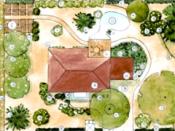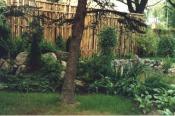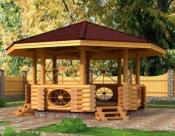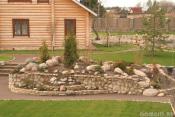Search
Login
Do-it-yourself vertical gardening
With the help of vertical gardening, you can turn the facade, an old unpretentious house, into a palace.
Content
- Basic rules for decorating the facade with plants
- Creepers
- Perennial creepers for central Russia
- Long-annualed annuals
- Wall gardening of the shadow and windy side
- Greening the sunny sides
- The secret to landscaping vertical walls and facadesvideo
Basic rules for decorating the facade with plants
When decorating the facade of a room, the following recommendations must be observed:
- planting long-lined vines should be made taking into account the fact that they should not block and obscure windows, interfere with the opening and closing of doors and windows;
- ampelous plants planted in flowerpots or baskets must be placed in a place protected from the wind and large pets;
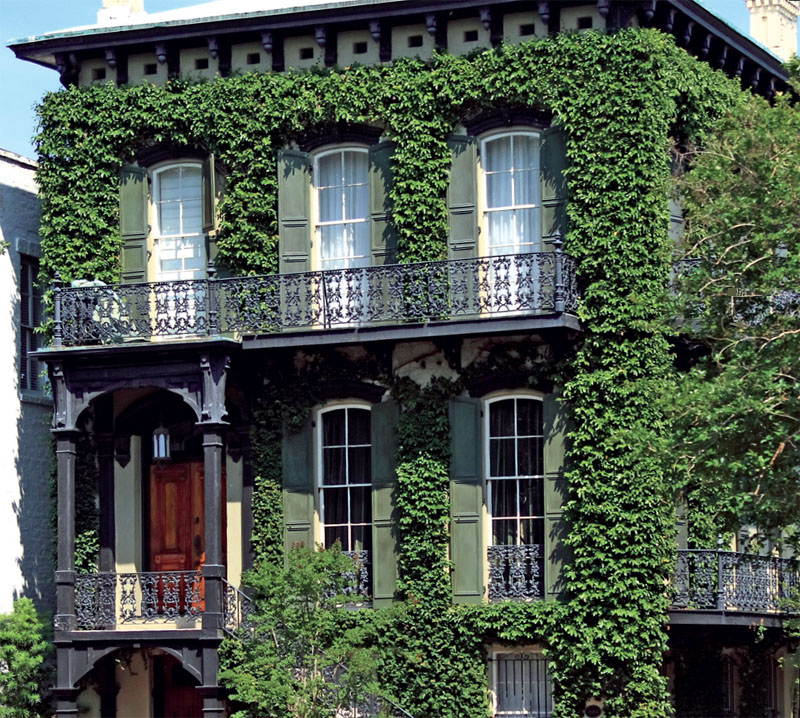
- placing ampelous plants on the visors of the porches, in the niches of the walls, it is necessary to take into account the erection of barriers that prevent their damage;
- shade-tolerant plants are placed on the north side of the building, photophilous on the south side, plants growing in partial shade are planted on the east or west side.
Creepers
Lianas are plants that have long, flexible lashes (branches), they can also be planted in the ground if they can survive the winter, or in containers installed on the surface of the soil, or suspended at a certain height, or exposed on the balcony of the building - this applies or to annual lianas, or to lianas not able to tolerate a cold winter, these perennials for the winter must be brought into the room.
When planting plants in the soil, a fertile layer of at least 25-30 cm is required. The same thickness of the fertile layer should be when planting in pots, but a drainage layer of expanded clay or broken brick is needed at the bottom of the tank.
It must be borne in mind that for the normal growth of large vines plants, the soil volume must be at least 8 liters, i.e. the bigger the pot, the better. Having buried a pot of vines in the soil, you protect them from the rapid drying of the substrate.
The pot is placed in the recess in the form of a funnel, the edges of the pot should rise above the soil. Creating a funnel, when a pot is installed in it, an empty space forms under the bottom of the pot, where excess water can drain. Most climbing plants need support.
The support can be made welded, in the form of metal gratings, the grate is well placed around the perimeter of the hole, it serves as a support and protects the plant from trampling. Liana rises along the lattice along the facade of the building, and then the plant moves along the support to other surfaces convenient for it - a balcony, cornice, etc.

As a support, you can use a wire, grille or cord attached to the canopy above the door, thus forming a green garland, resulting in a beautifully decorated porch.
Perennial creepers for central Russia
five-leaf maiden
This liana has emerald green foliage in the summer; by autumn it becomes reddish-crimson. Very powerful, large, beautiful deciduous vine. In view of its unpretentiousness, it is widely used for landscaping the facade and in the interior, winter-hardy, does not require shelter.
She is capable of climbing walls herself, does not require support, and is shade-hardy. For good development, use a mixture of leaf humus, peat and sand. It lends itself well to haircut, looks great on facades, porches and balconies.
vineyard (Ampelopsis) five-leaved
This is a large deciduous liana, with branched twisting tendrils and inedible berries, a very unpretentious plant. It can grow together with other vines, introducing diversity with its five-lobed leaves into the patterns formed by the foliage of other species.
As a support, the trunk of another plant or a stretched cord can serve. But in our climate, damage is possible in the winter, so in the fall it is better to remove it from the facade and cover it with winter old blankets or felt for the winter, the length of the vine is up to 15 meters.
amur grapes
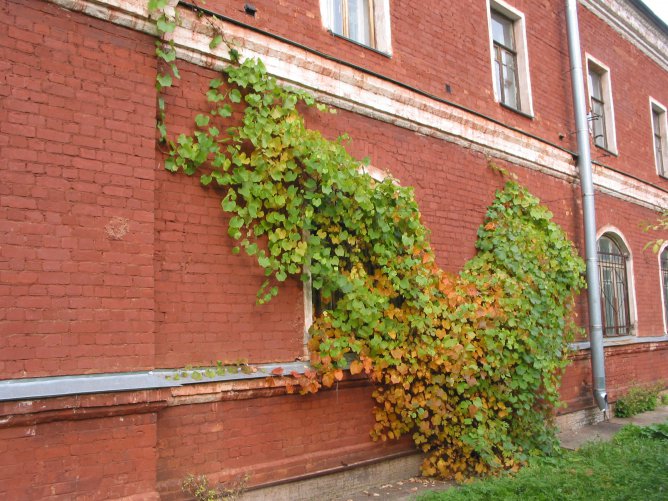
This is a large deciduous liana with a long forked antennae, using other tree trunks as a support, the trunk of the grape itself reaches up to 20 centimeters in diameter.
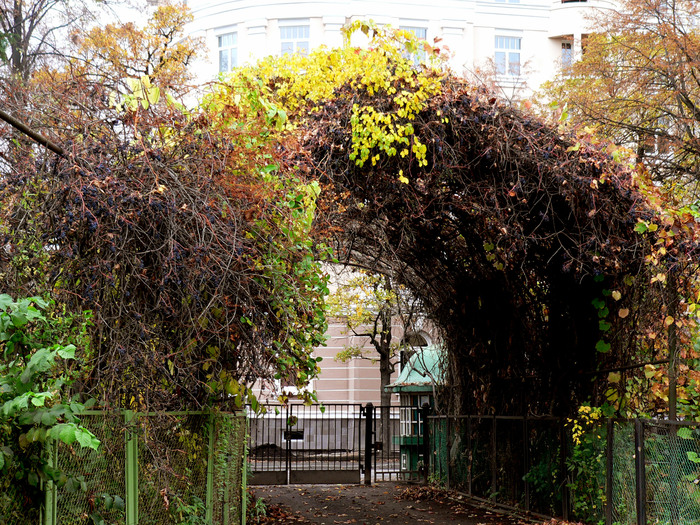
This liana is photophilous, tolerates frosts to minus 40 degrees. It forms small edible fruits, it is good to use a wire mesh as a support. It develops well when planted in a mixture of leaf humus, peat and sand.
actinidia colomictus
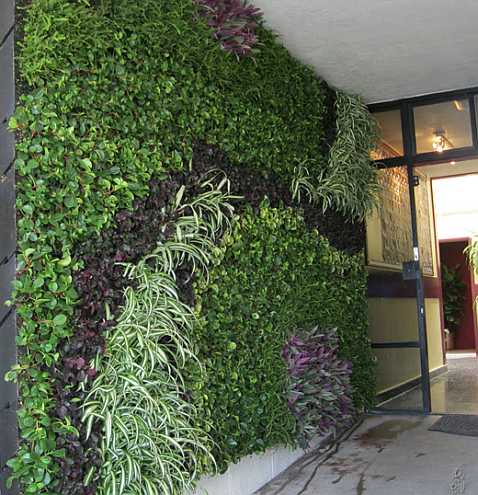
This ligneous liana, with fragrant flowers, delicious fruits, rises along tree trunks to a height of 25 meters, a dioecious plant, a trunk up to 15 centimeters in diameter.
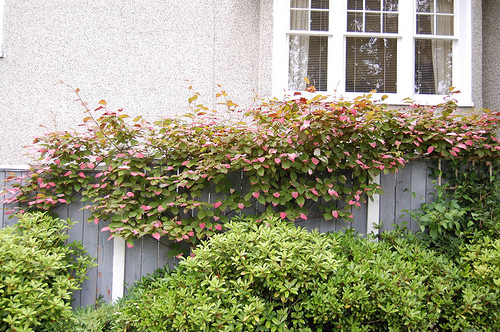
It blooms in July, the fruits ripen in October, sometimes gives large yields, up to 50 kg. berries with creepers, the fruits contain a huge amount of vitamin C. Requires fairly moist places, but well-drained.
As a support, you can use a wire, twine or the trunk of another tree.
manchu kirkazon
This liana with a lignifying trunk, length up to 20 meters, loves a sunny place, but grows well when shaded. At a young age, winter shelter is necessary, for this in the fall, it is removed from the support, covered with spruce branches.
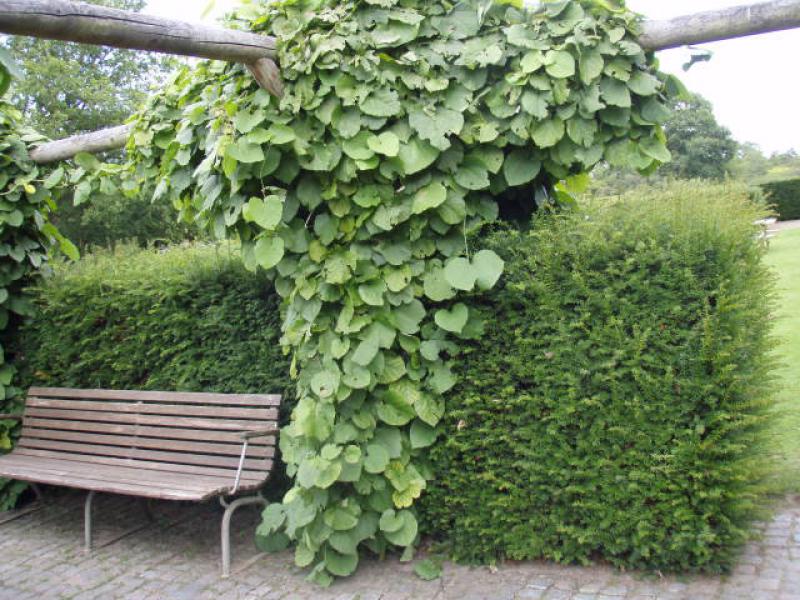
This plant needs support in the form of a lattice or pergola, requires regular watering and does not like a thickened planting.
clematis
One of the most decorative, flowering crops for vertical gardening, the length of the lashes up to 15 meters. This creeper necessarily needs support, for which it clings with the help of twisting petioles of leaves.
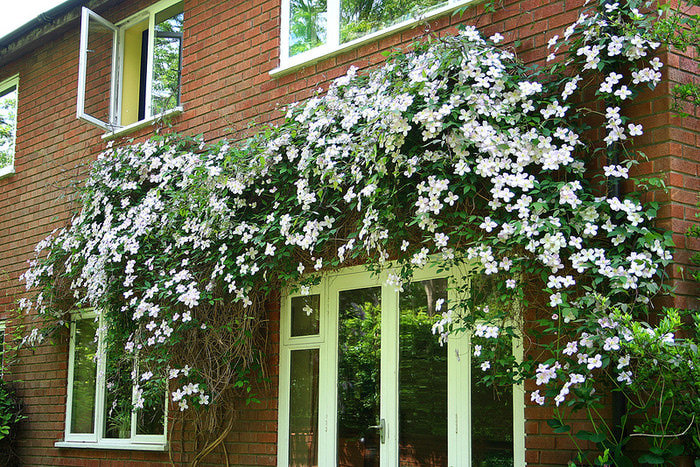
There are a variety of varieties, with different lengths, for example clematis alpine lowest, length up to 2 meters. Grapevine clematis is one of the largest clematis, up to 15 meters long.
Clematis are divided into two groups of varieties: some bloom on the shoots of the current year, others only on last year's shoots, a huge variety of colors from white to black.
When planting clematis, be sure to add wood ash to the hole, when the plant withers, dust the shoots from below with wood ash to a height of 30 cm, do this once a week early in the morning.
Long-annualed annuals
sweet pea
This creeper loves light, planting in a permanent place with germinated seeds, two, three peas per hole, planting in late April - early May.
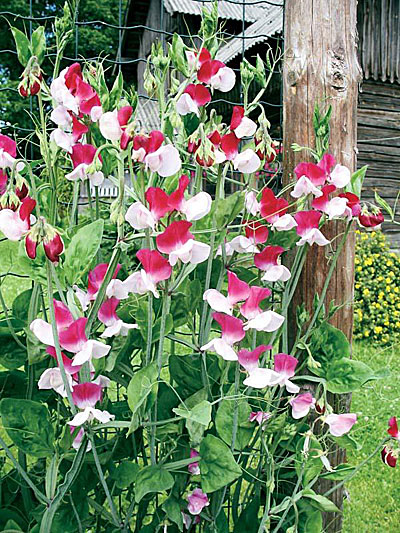
Requires mandatory support at least one meter high two weeks after emergence, these plants are very obedient, well branching after pinching.
three-color bindweed
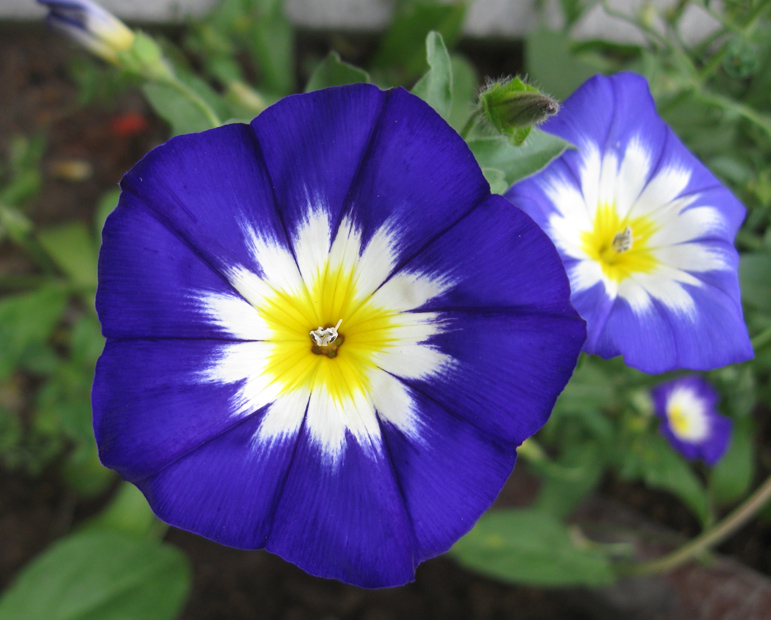
It is used for decorating low fences, balconies and niches, the plant grows very much (up to 40 cm high, up to 70 cm wide, up to 1.5 meters long). It grows well on fertile soils, but not heavy and not wet.
nasturtium
This is a photophilous plant, in May they are sown to a permanent place, the transplant does not tolerate well, blooms from July until frost.

Used in borders, decorative flowerpots, long-walled is used in vertical gardening.
ipomoea ivy
This is a winding vine with beautiful flowers, grows well in bright light, with moderately moist soil, it is necessary to apply fertilizer every two weeks.

It requires support in the form of a wire mesh, looks good when decorating arbors, a pergola. Seeds are sown directly in well-heated soil.
Wall gardening of the shadow and windy side
For wall landscaping from the shady and windy sides, a vineyard is suitable (Ampelopsis). It is better to plant it in pots, for the convenience of shelter for the winter.
Greening the sunny sides
On the sunny side, it is good to use Amur grapes and girl's grapes, they get along well with each other and can be used simultaneously.
You can also plant honeysuckle honeysuckle, as well as actinidia, you can plant Ampelopsis in a pot, all of these species go well with each other. But when landing, it is necessary to maintain a distance of at least 50 cm.
The secret to landscaping vertical walls and facades
One of the secrets of landscaping vertical walls and building facades is that climbing plants are mounted on a vertical wall without support using adhesive tape or adhesive tape, this is widely used in Western Europe.
Young plants are planted in the ground or boxes, and their climbing shoots are fixed on the surface of the wall in several places. A microclimate is created under the pieces of the adhesive plaster and in two weeks additional roots are formed, with the help of which the plant clings to cracks and bumps in the wall.

Subsequently, the adhesive plaster is removed, the plant continues to grow. Thus, you can draw patterns from plants on the facade of the house. But remember that the root secretions of plants can begin to destroy brick walls, this type of facade gardening is used only for a special type of house.
